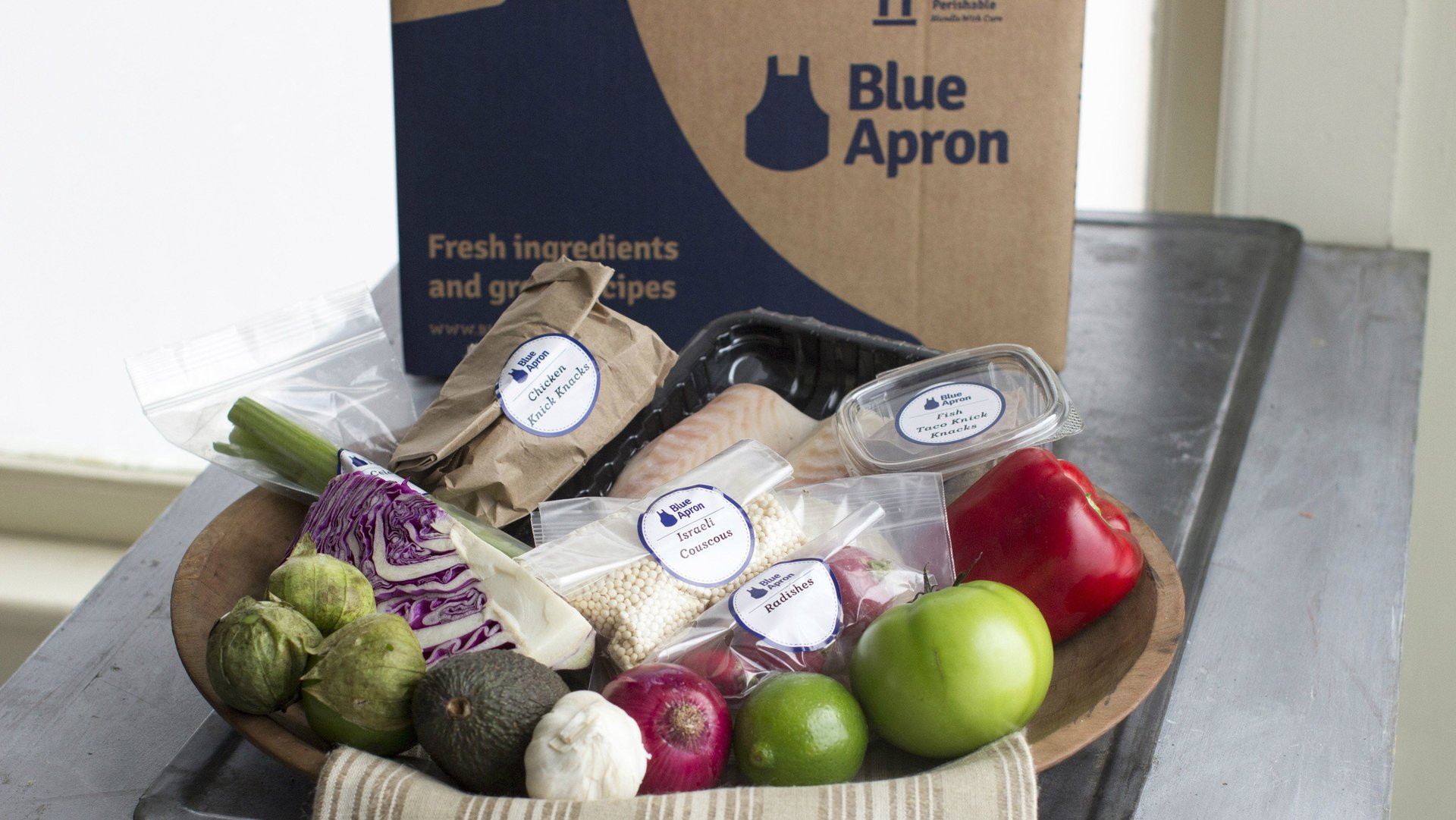Blue Apron is going public at the most awkward time imaginable, thanks to Amazon
There is no simple recipe to help Blue Apron navigate the challenge it’s about to face from Amazon.


There is no simple recipe to help Blue Apron navigate the challenge it’s about to face from Amazon.
And Blue Apron knows it.
That makes today’s announcement that Blue Apron has filed to go public just a bit awkward. Tucked into the section on risk factors in a regulatory filing for its initial public offering, the company said this:
[B]usiness combinations and consolidation in and across the industries in which we compete could further increase the competition we face and result in competitors with significantly greater resources and customer bases than us.
It’s just one sentence, but it’s perhaps the biggest existential threat to Blue Apron. And it nicely encapsulates the tectonic market force that was unleashed Friday (June 16) with the announcement of a deal to fuse online retail giant Amazon and the Whole Foods Market upscale grocery chain. That merger promises to reshape the grocery industry writ large, and with it the ways in which people have food delivered to them.
What this means for Blue Apron, which hopes to raise $510 million in a public offering at $15 to $17 a share, is unclear beyond the certainty that the New York-based meal-kit delivery service is going to have to evolve, and quickly.
Blue Apron, which started in 2012 and is now valued at roughly $3.2 billion, was founded during a time when brick-and-mortar grocery shopping was very much the norm in America. But as more people switch to having their groceries delivered (many of them perhaps through their Amazon Prime memberships), the demand for meal kits from elsewhere will likely change.
There’s also the other elephant in the room: Blue Apron isn’t profitable yet. Marketing costs are a major reason why. The company’s net revenue may have grown to $795.4 million by the end of 2016, but its net losses have also been on the rise. The company noted a loss of $54.9 million in 2016.
The good news for Blue Apron is that it has a head start in what’s shaping up to be a strong trend. The IPO filing revealed that the company is able to deliver its meal kits to just about every doorstep in the US with a ground-based delivery network comprised of several third-party partners. But whether it can entice new customers to give them a shot, retain them, and find a way to stay a step ahead of companies with a lot more experience in logistics is a question on everyone’s mind right now, especially for potential investors.